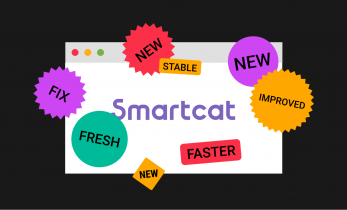Greater than 2 minutes, my friend!
Linguistic creativity – man vs. machine .
Whilst passing through the remote coast of Cornwall, UK, several hours west of London, I was quite sure that I was the only Norwegian speaker around. I was surprised when I heard a Norwegian lady’s exclamations. The curious thing was that she uttered a word for word translation into Norwegian of a well-known English idiom. “I’m a bit under the weather” became “Jeg er litt under været”. It sounded like a computer-generated translation with non-existent meaning.
Her mock-translation was naturally done in jest, but as an example, it’s very relevant. If you want your message to be heard in a world of constant communication, or “connection” as we call it these days, you must combine exactness and creativity. Failing that, your message may very well drown in the constant haze of words surrounding us.
“Your message may very well drown in the constant haze of words surrounding us.”
The best tool for transforming your English text into a perfected message in a different language is there right in front of you. No, I’m not referring to Google Translate, but a more complex, more intricate and at the end of the day a more fun tool: The human mind.
One thing separating human intelligence from artificial intelligence is that to humans, a word is not only a word, but also a part of a sentence. A sentence is a part of a paragraph. A paragraph forms a part of a text. When choosing the exact translation for one individual word, you must take into account the nature of the entire text before finally deciding on the target word. A prerequisite is contextual thinking, which we have yet to equip our computers with.
While writing this, I remembered how much time it took my American wife and me to understand what the other actually was implying when using the word “interesting”. I will save the full story for another time, but to think that one single word can cause that much confusion! It’s a keen reminder of how communication in reality is about adapting to your target audience your natural way of self-expression.
For this very reason, relying too heavily on technology alone may hurt more than aid you. Can you plot information about your target audience into a machine and have it adapt accordingly? I thought not. It takes one to know one as the saying goes, and what you need for your message to be heard by Norwegians for instance is – well – a Norwegian.
“As far as creativity goes, man is still defeating machines,
at least for now.”
What makes English more – interesting, is the vast array of idioms. I introduced this text with one idiom that simply does not work in other languages. It takes creativity to handle exactly those kinds of subtleties. As far as creativity goes, man is still defeating machines, at least for now. At the end of the day, a sterile and uncreative translation won’t cut the mustard, that’s my two pennies’ worth.
(You may want to plot that last sentence into Google Translate, using any output language you want. Ask a native speaker of the chosen language to read it. Watch the reaction).





Adequate machine translation will come right after adequate machine thinking, which, I believe, we will not see in the near future.
And this is good for us, eh? 😉
Exactly. In reality, I’m not wholly against CAT tools and machines as such. However, I do see it as my sub-mission to nail exactly how to utilise technology without sacrificing any of the individual qualities in a project – and yes, it CAN be done. 😀
CAT tools are different. I love CAT tools!
As for machine translation, I’d rather it didn’t exist at all, because it spoils some of potential clients by making them believe that translation costs much less than it really does, because “half of the work is done by machines now”. Others believe that high quality translation is not so important and resort to free machine translation.
On the bright side, machine translation can “seriously” compete only with poor human translation 🙂
Yes, you are right, they are different. But they share some of the same threats, in terms of too much repetitiveness from one target text to another. Sometimes, I even switch TM completely off, because I want to explore a whole new route.
That was… poetic! 🙂
Sure, if you want to translate poetry or a novel, or just some creative writing, TM is but a hindrance. I hear you.